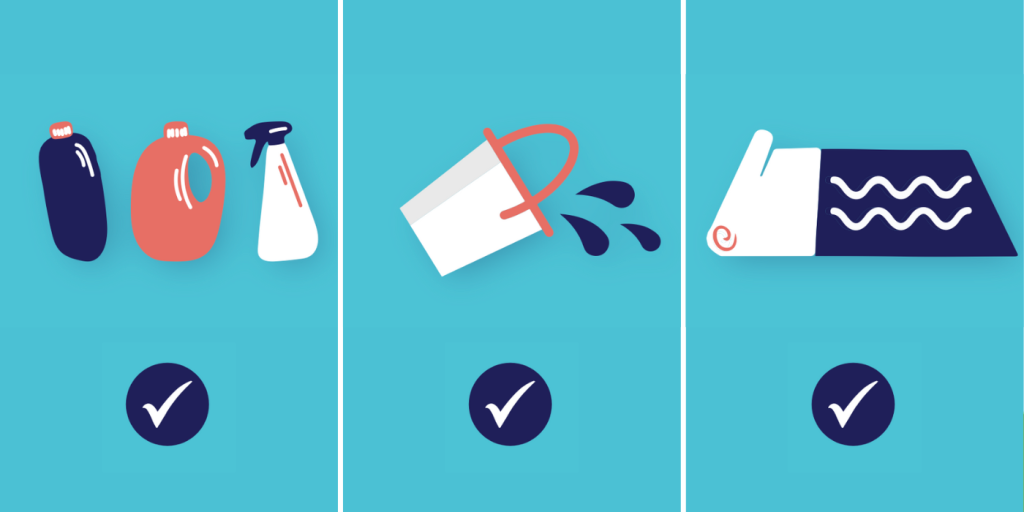When Is the Pool Season in Texas? Opening & Closing Pools
As the heat of summer starts to recede and the cooler days of fall take over, those of us who like nothing more than to enjoy our backyard pool every day find ourselves wondering when – or even if – we’ll be having to close it for winter.
The pool season is not like the football season – there’s no set date for it to start and no set date for it to end. And there are years when it may not happen at all! So when is it best to open and close a swimming pool in Texas and why can we sometimes get away without doing it?

If you would like to download our helpful infographic, please do so here.
Our article below takes a long dip into the subject of when to open and close your pool, as well as a brief guide as to what you need to do on each occasion.
Closing your pool for winter
In Texas, we’re luckier than many of our fellow Americans in that we don’t usually have to put up with prolonged spells of cold weather in winter. Nevertheless, we have recently seen significant amounts of snow across the state – February 2021 saw all 254 counties experiencing snow at the same time for the first time in 126 years!
-
When should you close your pool for winter?
The basic guide is that if the temperature gets down to 65° Fahrenheit and stays there or goes even lower for a few days, then it’s time to close your pool for winter. Don’t winterize your pool too soon, because otherwise the warm weather will mean that the chemicals you use for the job will be used up much quicker and you might get algae breeding in the water.
-
How do you close your pool for winter?

When winterizing a pool, there are a few chemicals you need to add to the water to keep it in top condition – these generally include algaecide, pool enzymes, and pool shock. It’s also a good idea to drain some water and lower the top level by a few inches to about the bottom of your tiling. Finally, invest in a strong cover – not only will this keep the water temperature up and debris out, but it’s also a sensible safety measure when you’re not using your pool.
The simplest way to winterize your pool, however, is to ask the experts at Pulliam Pools to do it for you – we’ll make sure your water gets the right mix of chemicals and take all the worry out of keeping your pool ready for reopening in spring.
-
What happens if you don’t close your pool for winter?
If you don’t winterize your pool, you run the serious risk of cold weather causing your water to turn green and breed unpleasant algae and bacteria. And when that happens, chances are that you’ll need to empty, clean, and refill it come spring. Even worse, if the weather gets really cold and you haven’t closed your pool, water could freeze in pipes and seriously damage them.
-
Can you get away without closing your pool?
A mild winter and a pool heater might mean you don’t need to close your pool for winter. If you get a few days of freezing weather, keep your pump going so that the water keeps moving and doesn’t freeze, and don’t forget to keep doing your usual maintenance tasks throughout.
Opening your pool after winter
Assuming you have closed your pool for winter, you’ll probably spend much of those colder months dreaming about when the temperature picks up again and you can once more start enjoying a daily dip.
-
When should you open your pool after winter?
When the temperature hits 70° Fahrenheit and remains there or thereabouts for a few days, it should be safe to open your pool again. This will usually be somewhere between mid March and early April.
-
How do you open your pool?

The first thing to do is remove the cover and give it a good clean, but make sure it has thoroughly dried before you fold it up and put it away for the summer. Next, you need to top the water back up to about the middle of your tiling.
Get your pump, filter, and other equipment running – when it’s been going for a few hours and the water is clean, you can test it to check what chemicals you should add to restore it to its optimum pH balance. You’re aiming for a pH reading of between 7.4 and 7.6 – if you’re not within this range, you’ll have to add the appropriate chemicals to raise or lower it as necessary. Finally, you just need to give your pool some ‘shock’ treatment to get rid of any lingering bacteria and you should be good to go.
Again, the simplest way to prep your pool for summer is to ask for our help. We’ll use our years of experience to ensure everything is done properly and that you’re ready for the summer season. And don’t forget to book in your pool maintenance to make sure you’re enjoying a clean and healthy swimming pool all the way through to the end of the season.
Owning a pool is always easier and more straightforward with the crew at Pulliam Pools managing all your maintenance and winterizing tasks. With over 100 years of experience building and maintaining pools in and around Fort Worth, Arlington, and Weatherford, you can count on us to get it right and ensure your pool is always in prime condition.
